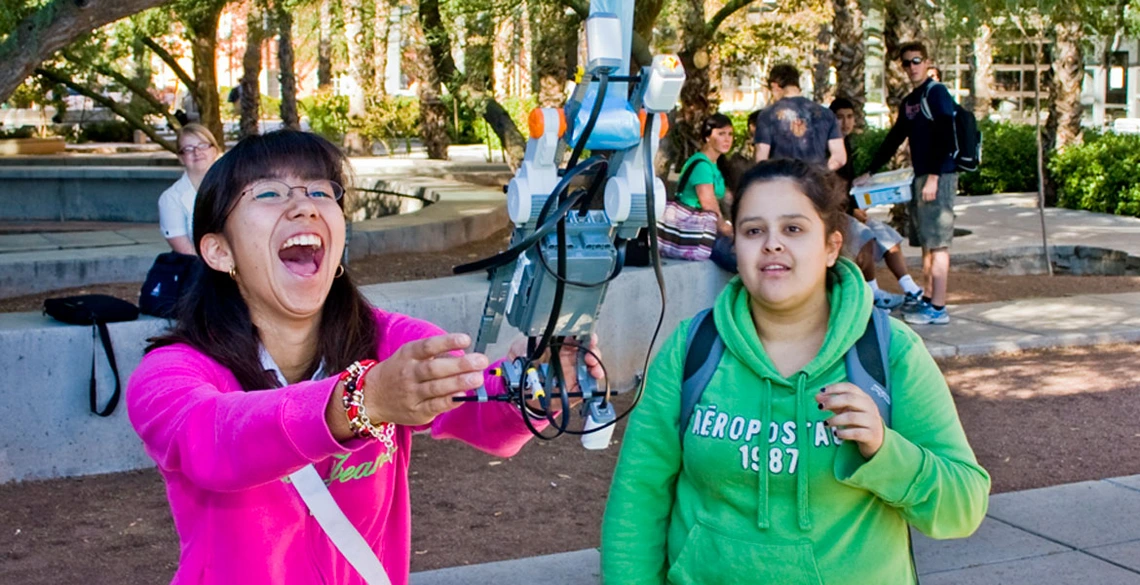Engineering Students Demonstrate Climbing Robots for Engineering 102 Open Day
All Engineering freshman -- and now high school students -- learn a few fundamental principles before deciding which engineering field to study.

Engineering freshmen put their robots to work climbing a ribbon up to the AME bridge.
As part of the Introduction to Engineering course (Engineering 102, Section 1), UA engineering students have designed a series of robots that can climb three stories up a slender ribbon.
Engineering freshmen tested their robots for the first time Dec. 2 in the courtyard of the Aerospace and Mechanical Engineering building. The test run enabled the students to plan last-minute design modifications in preparation for the Engineering 102 open day on Dec. 4.
Engineering 102 introduces students to the fundamental principles of engineering design and teaches them teamwork, communication and design techniques and how they can be applied to a variety of engineering problems. This course also shows students how to take charge of their long-term career plans. Section 3H of the Engineering 102 group, led by associate professor of electrical and computer engineering Kathy Melde, held a similar indoor demonstration last week.
Earning College Credit in High School
The open day is part of a College of Engineering pilot program with Hamilton High School in Chandler, Ariz., that enables students to enroll in Engineering 102 while still attending high school. Following the robot demonstration, the Hamilton High School students will visit the UA Baja Racing shop, the Soft Tissue Biomechanics Laboratory, and the Aerodynamics Laboratory (wind tunnel), all in AME. After lunch they will visit the College of Optical Sciences.
In June 2008, more than 40 educators attended the Southwest’s first Lego robotics conference at AME. The conference was organized, with help from Tufts University, by the Lego Robotics Outreach Club, or RoboClub, which was formed in 2008 by mechanical engineering students and their faculty advisor, professor Eniko Enikov, to promote engineering, science and math education using Lego materials as a teaching tool.
RoboClub will put engineering students and teachers together in classrooms to provide Lego-based interactive lessons that are structured like engineering design projects. The objective of the collaboration between RoboClub and teachers is to encourage children to follow careers in science and technology.
RoboClub uses Lego’s Mindstorm NXT kits and Robolab software to help develop curricula that meet State of Arizona standards for science, math and technology. To achieve this, RoboClub members have adopted the Student Teacher Outreach Mentorship Program—STOMP—developed at the Tufts Center for Engineering Educational Outreach.
Support for the project came from Paul Prazak at Texas Instruments, who funded eight Lego kits; the College of Engineering's Department of Electrical and Computer Engineering, which funded seven Lego kits; and from the College itself, which funded three kits.

